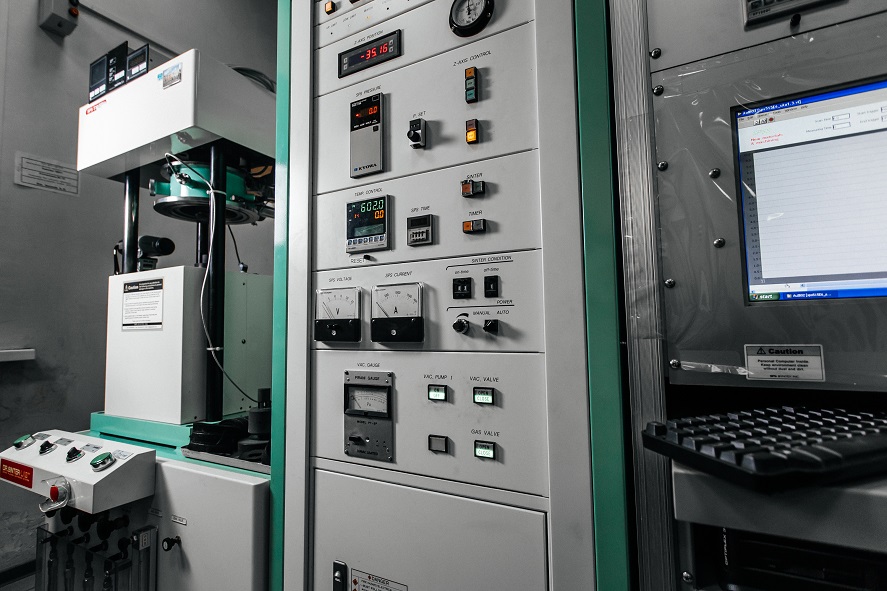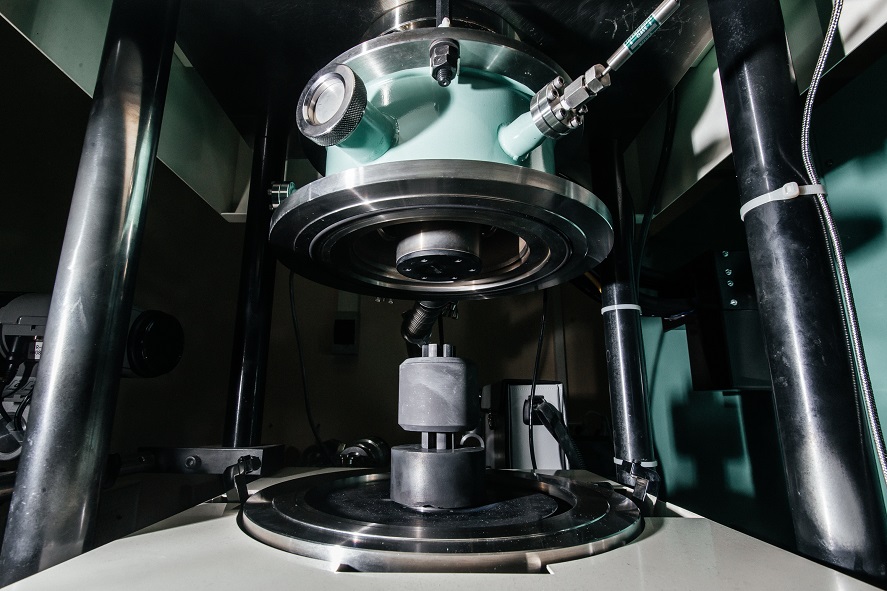The TPU team from the Innovation Center for Nanomaterials and Nanotechnologies of the School of Advanced Manufacturing Technologies placed second in the final of the BRICS Industrial Innovation Contest for their technology for products from nanoceramics and nanocomposites development.
 Photo: at the Innovation Center for Nanomaterials and Nanotechnologies"
Photo: at the Innovation Center for Nanomaterials and Nanotechnologies"A total of 1,330 projects from home and abroad had been submitted, including 1,268 from China and 62 from other countries around the world. Among the Russian winners are also Lomonosov Moscow State University, Russian Railways, Moscow Aviation Institute (National Research University), etc.
The contest’s final kicked off in Xiamen as part of the BRICS Forum on Partnership on New Industrial Revolution. This year it was held under the theme “Industrial innovation for stronger, greener, and healthier global development.” Contestants compete in the Industrial Internet, Intelligent Manufacturing, and Green Development tracks.
The 90 strongest projects in each track reached the final, fighting for the first, second, and third prizes. Chinese participants presented their projects in person, while finalists from other countries presented them remotely. The developments were evaluated by experts from sectoral ministries, think tanks, enterprises, and BRICS international organizations.

TPU scientists received the second prize in the intelligent manufacturing track for their development of technology for products from nanoceramics and nanocomposites. The technologies use cost-effective methods for forming dry nanopowder, which TPU has patented in Russia and abroad, as well as electric pulse plasma sintering.
“At the contest, we presented the practical results of extensive research into ultrafine (nano) powders, the development of ceramic nanomaterials based on them, and the technologies of numerous functional products made from such materials.
We have introduced seven technologies into industrial production as a result of the implementation of the project under Decree No. 218 of the Government of the Russian Federation. These are technologies for ceramic products for micro- and optoelectronics, protection and safety systems, and pipeline transport,” Oleg Khasanov, Director of the TPU Innovation Center for Nanomaterials and Nanotechnologies, says.
Methods of molding dry nano- and micro-dispersed powders into products of specified shapes and sizes without the use of plasticizers and other binders, as patented by TPU, are competitive features of new technologies. This approach increases the efficiency of technologies. Also, it provides an increase in the operational properties complex of products due to the density’s uniform distribution in powder compacts of complex geometry.
Nanostructured ceramics and composites, due to the physical-mechanical, optical, and electrophysical properties complex, are the key materials in demand in all modern high-tech industries, such as electronics, telecommunications systems, automotive, aerospace, nuclear technology, medicine, and others. Ceramic materials are used in almost every industry today.
Among the team’s developments are large projects with industrial partners in the Federal Target Program under Decree No. 218 of the Government of the Russian Federation, grants from the International Science and Technology Center, the Russian Science Foundation, and the Russian Fundamental Research Fund. Scientists have developed products, technologies, and methods for such partners as the National Research Center "Kurchatov Institute," the Siberian Chemical Combine, Nissan Motor Co., MOJE Keramik-Implantate, Korea Electronics Co., the National Nuclear Center of the Republic of Kazakhstan, etc.
Reference:
The competition was open to projects from enterprises, research centers, universities, business associations, and individuals from the BRICS nations.
Five nations make up the BRICS alliance: South Africa, Brazil, Russia, India, and China.
